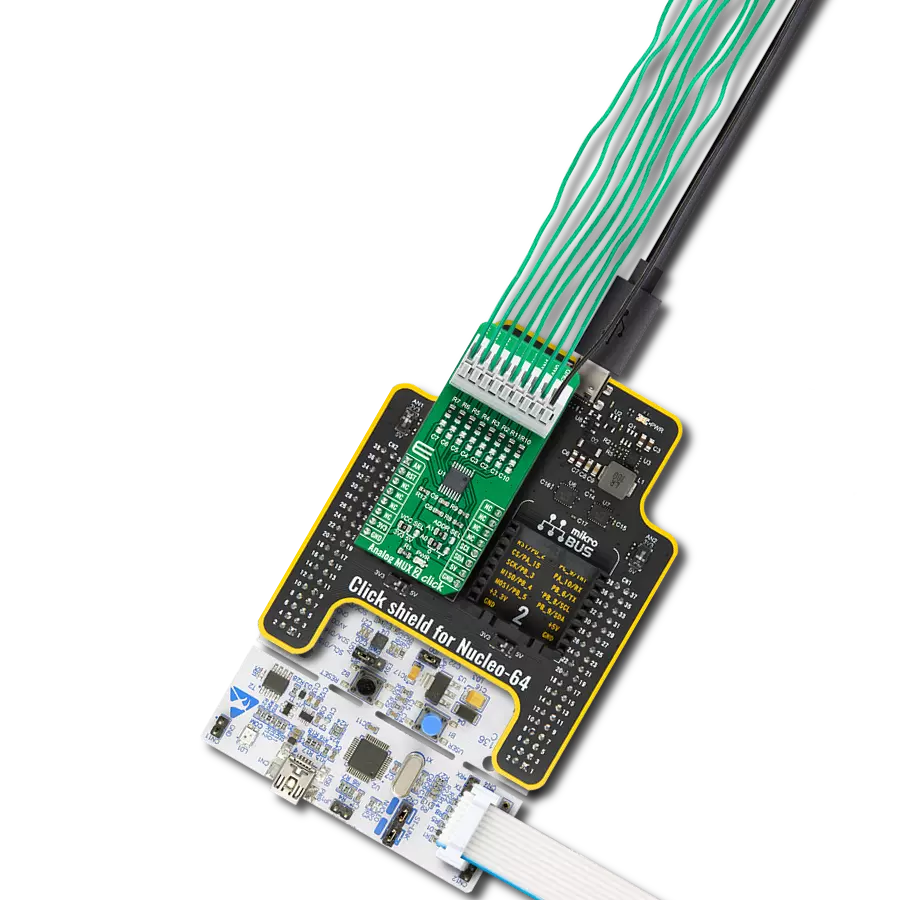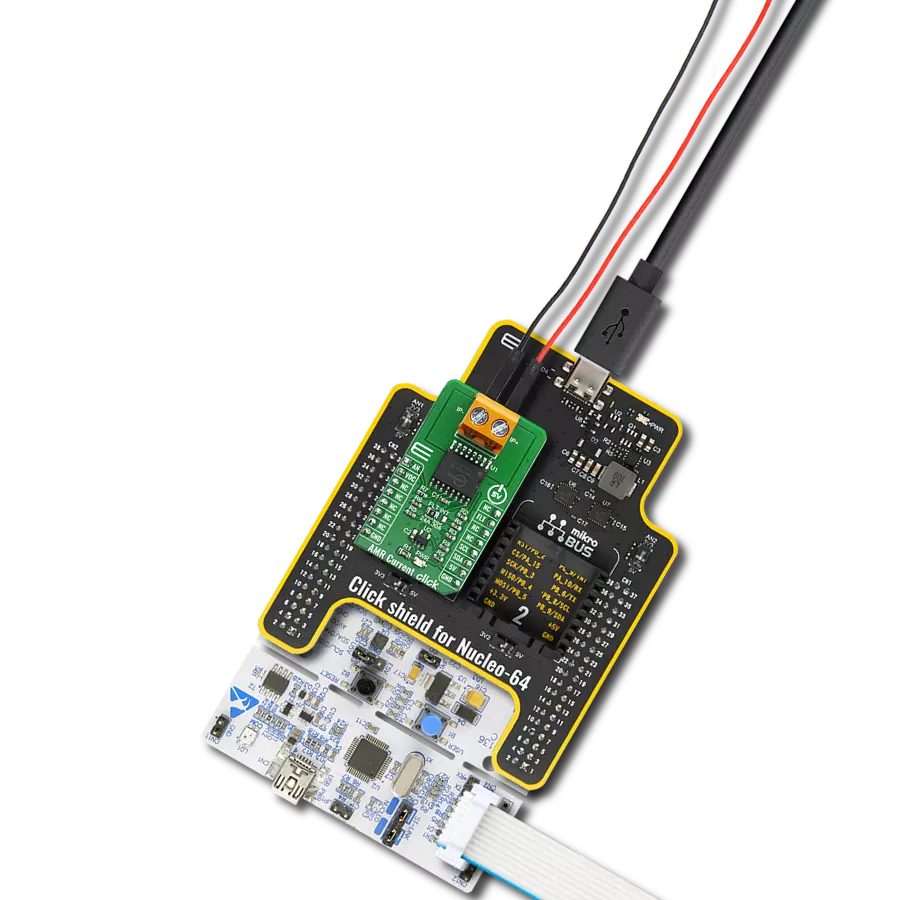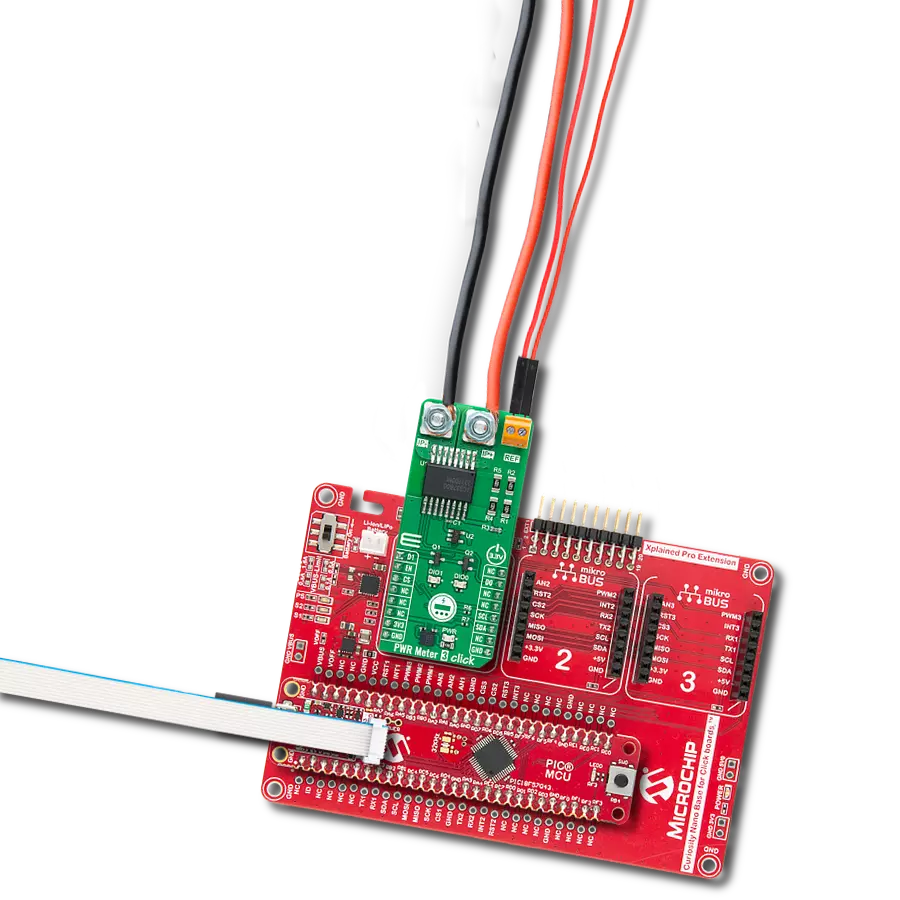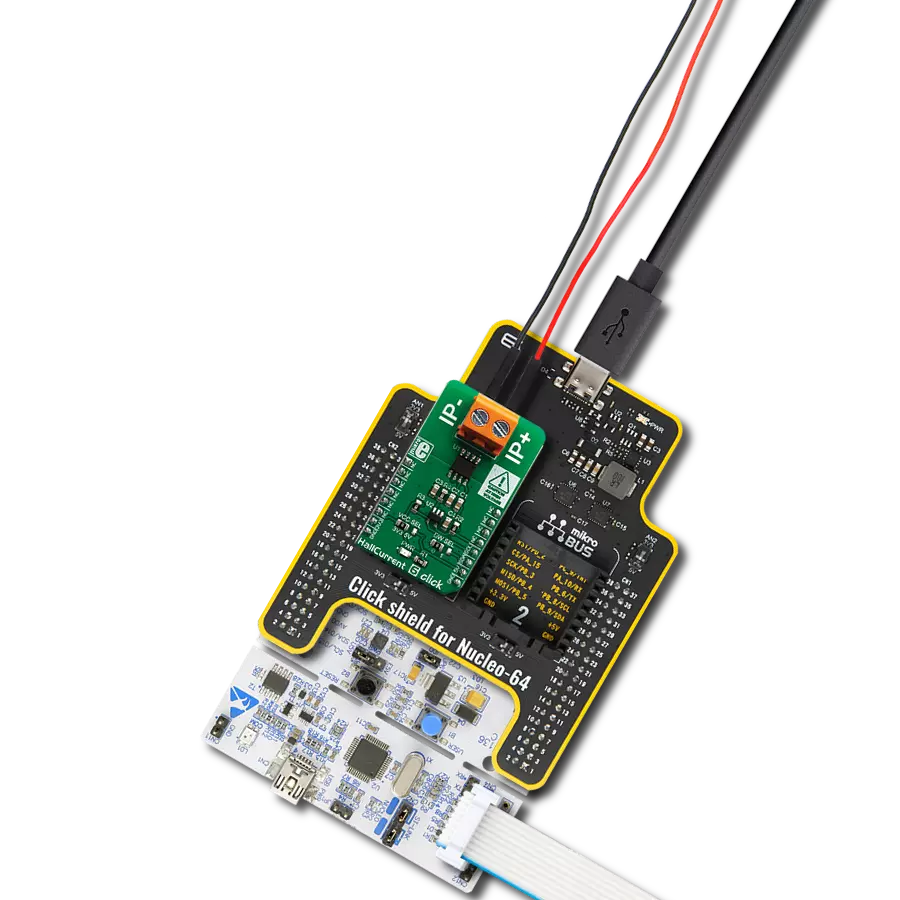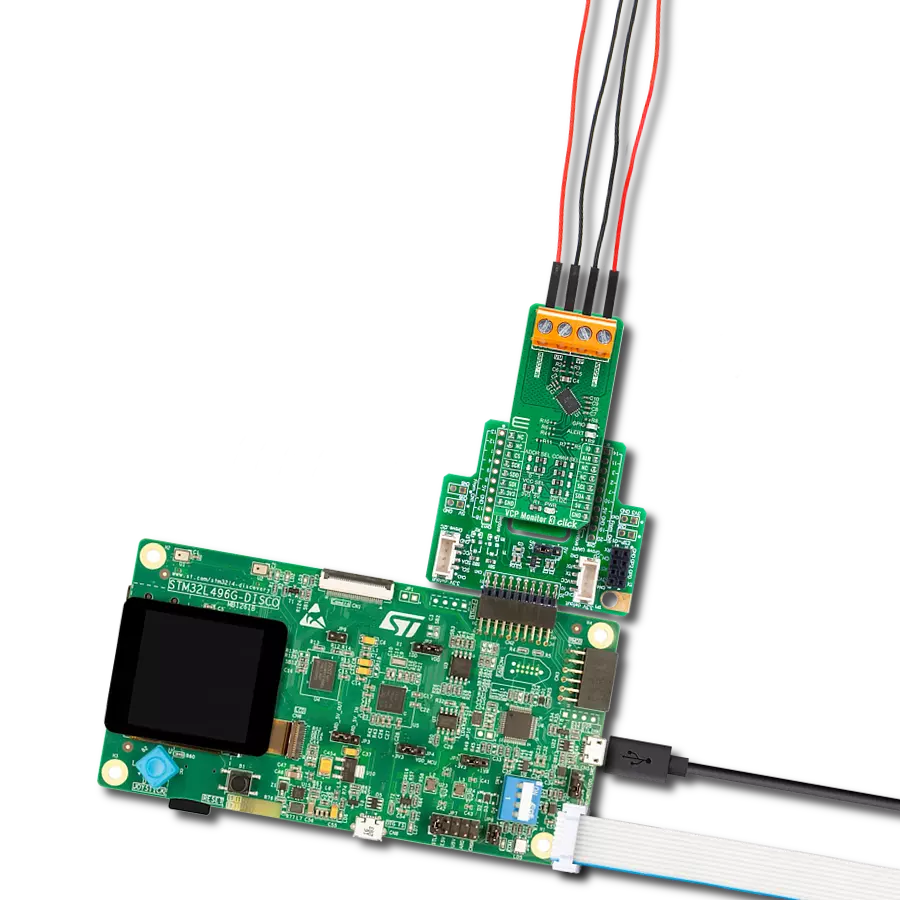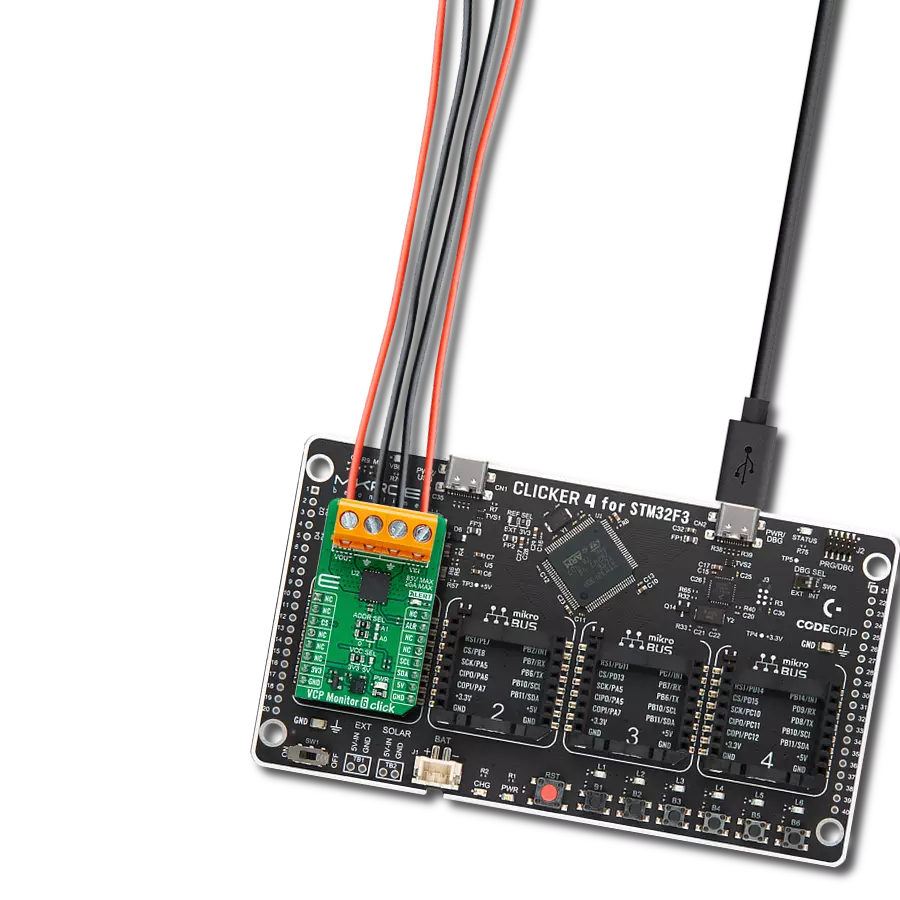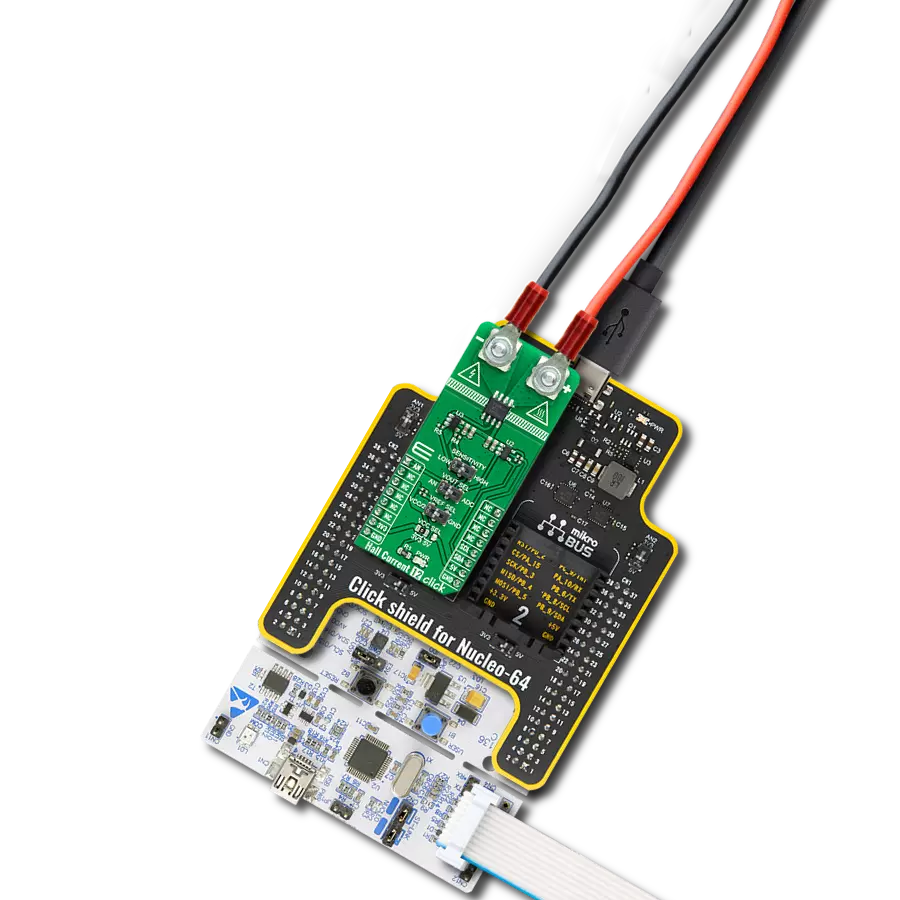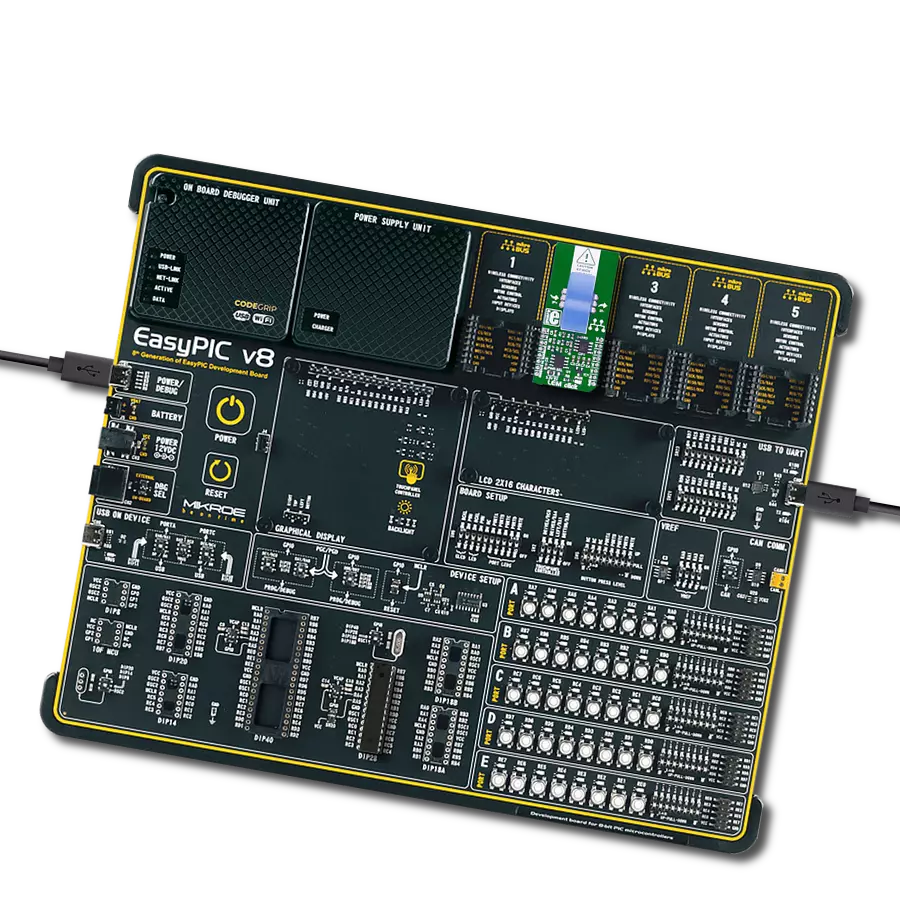Experience a breakthrough in signal processing with our innovative RMS-to-DC voltage converter, delivering real-time insights through accurate voltage conversion, essential for advanced data analysis
A
A
Hardware Overview
How does it work?
RMS to DC Click is based on the LTC1968, a precise RMS-to-DC converter with the wide input signal bandwidth from the Analog Devices. This IC uses the proprietary delta-sigma computational techniques to achieve a highly linear DC voltage output at its output in respect with the RMS of the input signal. The RMS is typically associated with the alternating signals. This Click board™ is capable of measuring the RMS of both bipolar and unipolar periodically alternating signals, over a wide range of frequencies. The RMS or Root Mean Square is used to describe the power of the input signal: the RMS value of current is equal to a DC current value that would produce the same heat dissipation on the resistive load. Therefore, it is often important to know the RMS value of the signal. RMS to DC click allows measuring of the RMS value of a periodically repetitive signal. As mentioned before, the LTC1968 provides a highly accurate and linear conversion of the RMS value at its input, to a constant voltage at its output. The constant voltage directly depends on the RMS value of the input signal, thanks to the innovative
sigma-delta conversion technique of the LTC1968, which is described in details within the LTC1968 datasheet. Due to a high output voltage linearity, no compensation elements are required, except a single filtering capacitor. The output voltage of the LTC1968 is then fed to an analog-to-digital converter (ADC). For the voltage-to-digital conversion purposes, RMS to DC click utilizes the MCP3221, a 12-bit ADC with I2C interface, from Microchip. This ADC uses the voltage at its power supply pin as a conversion reference. This simplifies the Click board™ schematics, allowing the reference voltage to be changed along with the power supply voltage of the ADC. The communication logic voltage level, as well as the ADC power supply voltage, can be changed by switching the SMD jumper labeled as VCC SEL to either 3V3 position or 5V position. Note, however, that this will cause the reference ADC voltage to change accordingly. This should be accounted for when calculating the output value. The input signal can be connected to the two-pole input signal connector. The LTC1968 IC accepts both
bipolar and unipolar signals at its input, thanks to the differential input. The negative differential input is used as the reference input on this Click board™, therefore it is offset at 2.5V in respect to GND, while the positive differential input is decoupled by a 100nF capacitor, allowing only the AC component of the input signal to be processed. This allows signal input within the ±2.5 range to be applied. RMS to DC click also features an #ENABLE pin, used to enable or disable the LTC1968 when used in power sensitive applications. This pin is pulled to a LOW logic level by a resistor, so the IC is enabled by default. The user can disable the IC by pulling the #ENABLE pin to a HIGH logic level. This pin is routed to the CS pin, and it is labeled as EN on this Click board™. Due to an overall circuit simplicity allowed by the LTC1968 IC, the ADC directly outputs the RMS value of the input signal. However, the Click board™ is supported by a mikroSDK compatible library, which contains functions that simplify the development even further, allowing the RMS data to be read in almost a single line of code.
Features overview
Development board
PIC18F57Q43 Curiosity Nano evaluation kit is a cutting-edge hardware platform designed to evaluate microcontrollers within the PIC18-Q43 family. Central to its design is the inclusion of the powerful PIC18F57Q43 microcontroller (MCU), offering advanced functionalities and robust performance. Key features of this evaluation kit include a yellow user LED and a responsive
mechanical user switch, providing seamless interaction and testing. The provision for a 32.768kHz crystal footprint ensures precision timing capabilities. With an onboard debugger boasting a green power and status LED, programming and debugging become intuitive and efficient. Further enhancing its utility is the Virtual serial port (CDC) and a debug GPIO channel (DGI
GPIO), offering extensive connectivity options. Powered via USB, this kit boasts an adjustable target voltage feature facilitated by the MIC5353 LDO regulator, ensuring stable operation with an output voltage ranging from 1.8V to 5.1V, with a maximum output current of 500mA, subject to ambient temperature and voltage constraints.
Microcontroller Overview
MCU Card / MCU
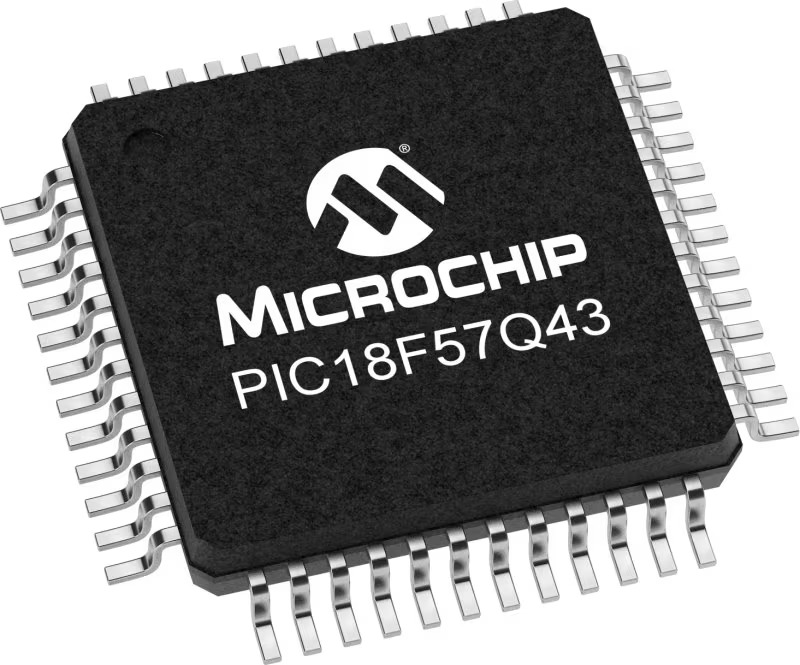
Architecture
PIC
MCU Memory (KB)
128
Silicon Vendor
Microchip
Pin count
48
RAM (Bytes)
8196
You complete me!
Accessories
Curiosity Nano Base for Click boards is a versatile hardware extension platform created to streamline the integration between Curiosity Nano kits and extension boards, tailored explicitly for the mikroBUS™-standardized Click boards and Xplained Pro extension boards. This innovative base board (shield) offers seamless connectivity and expansion possibilities, simplifying experimentation and development. Key features include USB power compatibility from the Curiosity Nano kit, alongside an alternative external power input option for enhanced flexibility. The onboard Li-Ion/LiPo charger and management circuit ensure smooth operation for battery-powered applications, simplifying usage and management. Moreover, the base incorporates a fixed 3.3V PSU dedicated to target and mikroBUS™ power rails, alongside a fixed 5.0V boost converter catering to 5V power rails of mikroBUS™ sockets, providing stable power delivery for various connected devices.
Used MCU Pins
mikroBUS™ mapper
Take a closer look
Click board™ Schematic

Step by step
Project assembly
Track your results in real time
Application Output
1. Application Output - In Debug mode, the 'Application Output' window enables real-time data monitoring, offering direct insight into execution results. Ensure proper data display by configuring the environment correctly using the provided tutorial.

2. UART Terminal - Use the UART Terminal to monitor data transmission via a USB to UART converter, allowing direct communication between the Click board™ and your development system. Configure the baud rate and other serial settings according to your project's requirements to ensure proper functionality. For step-by-step setup instructions, refer to the provided tutorial.

3. Plot Output - The Plot feature offers a powerful way to visualize real-time sensor data, enabling trend analysis, debugging, and comparison of multiple data points. To set it up correctly, follow the provided tutorial, which includes a step-by-step example of using the Plot feature to display Click board™ readings. To use the Plot feature in your code, use the function: plot(*insert_graph_name*, variable_name);. This is a general format, and it is up to the user to replace 'insert_graph_name' with the actual graph name and 'variable_name' with the parameter to be displayed.

Software Support
Library Description
This library contains API for RMS to DC Click driver.
Key functions:
rms2dc_read_adc- ADC Read functionrms2dc_vout_adc- Get Output Voltage functionrms2dc_enable- Enable function.
Open Source
Code example
The complete application code and a ready-to-use project are available through the NECTO Studio Package Manager for direct installation in the NECTO Studio. The application code can also be found on the MIKROE GitHub account.
/*!
* \file
* \brief RmstoDc Click example
*
* # Description
* This application convert the RMS of the input signal into a DC voltage.
*
* The demo application is composed of two sections :
*
* ## Application Init
* Initializes I2C interface and turns ON the device.
*
* ## Application Task
* Reads DC output voltage calculated to mV and
sends results to the serial terminal.
*
* Note : The input voltage frequency should be in the range from 50Hz to 250kHz.
* Also the input voltage amplitude must be lower than 5V.
* In this conditions the device can convert the RMS signal, in every form, to DC signal.
*
* \author MikroE Team
*
*/
// ------------------------------------------------------------------- INCLUDES
#include "board.h"
#include "log.h"
#include "rmstodc.h"
// ------------------------------------------------------------------ VARIABLES
static rmstodc_t rmstodc;
static log_t logger;
static uint16_t out_volt_dc;
// ------------------------------------------------------ APPLICATION FUNCTIONS
void application_init ( void )
{
log_cfg_t log_cfg;
rmstodc_cfg_t cfg;
/**
* Logger initialization.
* Default baud rate: 115200
* Default log level: LOG_LEVEL_DEBUG
* @note If USB_UART_RX and USB_UART_TX
* are defined as HAL_PIN_NC, you will
* need to define them manually for log to work.
* See @b LOG_MAP_USB_UART macro definition for detailed explanation.
*/
LOG_MAP_USB_UART( log_cfg );
log_init( &logger, &log_cfg );
log_info( &logger, "---- Application Init ----" );
// Click initialization.
rmstodc_cfg_setup( &cfg );
RMSTODC_MAP_MIKROBUS( cfg, MIKROBUS_1 );
rmstodc_init( &rmstodc, &cfg );
rms2dc_enable( &rmstodc, RMS2DC_DEVICE_EN );
}
void application_task ( void )
{
out_volt_dc = rms2dc_vout_adc( &rmstodc, RMS2DC_VCC_3V3 );
log_printf(&logger,"%u mV\n",out_volt_dc);
Delay_ms ( 500 );
}
int main ( void )
{
/* Do not remove this line or clock might not be set correctly. */
#ifdef PREINIT_SUPPORTED
preinit();
#endif
application_init( );
for ( ; ; )
{
application_task( );
}
return 0;
}
// ------------------------------------------------------------------------ END
Additional Support
Resources
Category:Measurements





















